Julia Maesa
Julia Maesa (c.165-224): Roman empress, grandmother of the Roman emperors Heliogabalus (r. 218-222) and Severus Alexander (r. 222-235).
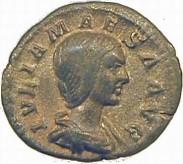
Julia Maesa was born on 7 May of an unknown year. Because her first daughter was born in 180, and Roman girls typically married at the age of fifteen, Maesa may have been born in c.165 or a few years earlier. Her father was Julius Bassianus, the high priest of the sun god Elagabal of Emesa, a holy city in Syria (modern Homs). Maesa married to a Roman knight named Gaius Julius Avitus Alexianus. The couple had two daughters, Julia Soaemias (born c.180) and Julia Mamaea, who was a bit younger.
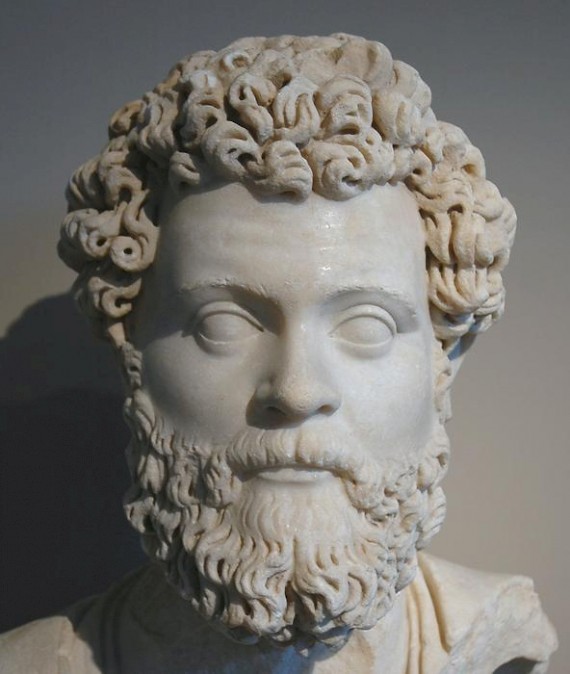
In 193, the family's fortune improved spectacularly. Maesa's elder sister Julia Domna had married a senator named Septimius Severus, who unexpectedly became emperor in the summer of 193, after the brief reign of Pertinax. Severus made Maesa's husband praetor in 194, an important office for which the family needed to settle in Rome (if Maesa had not moved to the capital before). The Syrian connections of Julia Maesa and Julia Domna may have been useful during the civil war between Severus and his rival, Pescennius Niger, who controlled the east. It is possible that as a move in the political game, Maesa's daughter Julia Soaemias had to marry to a Syrian named Sextus Varius Marcellus.
After the civil war, Severus briefly fought against the Parthian Empire, returned to Rome, and fought against another rival, Clodius Albinus. Gaius Julius Avitus Alexianus was left in charge of the Fourth Legion Flavia, which was stationed at the Lower Danube. In 197-198, the Parthian war was nenewed; the Romans sacked the enemy capital Ctesiphon and annexed Mesopotamia. Maesa may have continued to reside in Rome, where her husband was made consul in c.200.
After this, Alexianus' career, obstructed by Plautianus, came to a standstill, to be resumed after 208. He was governor in several provinces; it is not known whether Maesa followed him to Dalmatia, Asia, and Cyprus, where he died in 216 or 217.
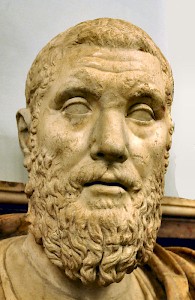
The reign of Severus came to an end in 211, when the great general died, peacefully, in Eburacum (modern York). He was succeeded by his son Caracalla, who was to reign the empire for another six years, until he was murdered near Harran in Mesopotamia (8 April 217), where he was fighting another war against the Parthians. His praetorian prefect, Macrinus, was made emperor. Julia Domna, the mother of Caracalla, facilitated the succession by committing suicide; and Macrinus allowed Maesa to keep her great wealth and retire to Emesa.
He had greatly underestimated Maesa. She wanted to restore the dynasty that had been founded by her brother-in-law Severus, and she had a handsome grandson: the son of Julia Soaemias and Sextus Varius Marcellus would make a good emperor.
His name was Varius Avitus Bassianus, he was fourteen-year old, and was very popular among the soldiers of the eastern legions, because he acted as priest in the cult of Elagabal of Emesa. Maesa paid money to the garrison at Raphanaea and on 16 May, the Third legion Gallica switched its allegiance from to the boy Bassianus, who was - it was claimed - a bastard son of Caracalla.
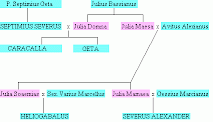
Macrinus heard about the rebellion in Antioch and sent his praetorian prefect, Ulpius Julianus, to the south with part of the Second legion Parthica, but he was lynched and the soldiers sided with Bassianus too. II Parthica and III Gallica now advanced to the north, to Antioch. On 8 June 218, the last loyal troops of Macrinus were defeated. (It was said that Maesa witnessed the battle from a chariot and restrained fleeing soldiers.) Macrinus was killed in the aftermath of the battle.
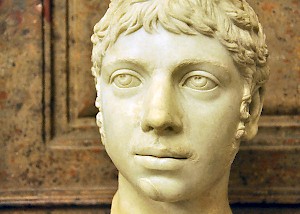
Now, the reign of Bassianus could begin, but it is easy to see that great influence would be exercised by Julia Maesa and Julia Soaemias, and they were indeed called augustae, "empresses". Soon, the Romans were to regret that they had made the young man emperor, because he introduced several unusual religious practices in Rome. He is better known under the name of his god: Elagabal or Heliogabalus.
Maesa's influence is indicated by the fact that coins were minted with her portrait. The historian Herodian even presents her as the real ruler of the Roman empire. There is something to be said for this, because Maesa survived the accession of Heliogabalus, and it was not common that an emperor who owed his throne too ostentatiously to someone else, left him or her on an influential position. Heliogabalus simply had not the power to remove his grandmother - or did not have the intention, because he was more interested in the reform of the Roman religion and the introduction of the cult of Elagabal.
On the other hand, after the winter of 220/221, the young man started to conduct his own policy. All kind of remarkable religious measures were taken, and Heliogabalus rapidly lost popularity. Not everyone appreciated his passion for the Emese sun god, and his marriage to a Vestal Virgin, Aquilia Severa, was considered to be a scandal.
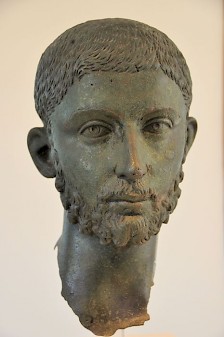
In the summer of 221, he seems to have moderated his religious policy. His mother and grandmother convinced him to accept his cousin Alexianus, the son of Julia Mamaea, as his caesar; after the adoption, the caesar was called Severus Alexander. Heliogabalus also divorced from the Vestal Virgin, and married to a Roman lady, a descendant of the beloved former emperor Marcus Aurelius. However, this moderation was only temporary: in December 221, Heliogabalus again married Aquilia Severa and tried to get rid of Severus Alexander. In this conflict, Julia Maesa and the Senate backed the caesar, and on 11 or 12 March 222, Heliogabalus was lynched by his soldiers. His mother was killed as well.
Julia Maesa died not long after the accession of Severus Alexander: perhaps in 223, but in any case before 3 August 224. She was deified.